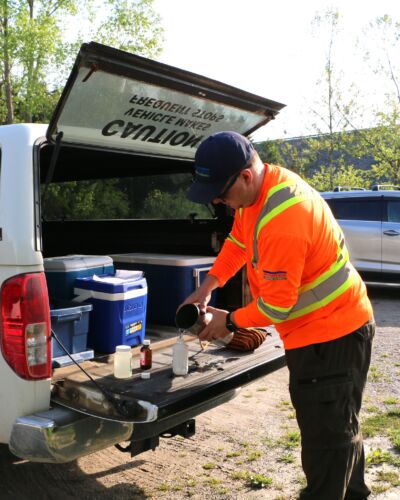Algal Blooms
The Upper Thames River Conservation Authority (UTRCA) monitors water quality throughout its reservoirs from May to September, including monitoring for algae and algal blooms.
It is important to remember algae are natural primary producers and play an important role in the food webs of healthy lakes and rivers. They are normally barely visible in the water but, under certain conditions, can increase rapidly to form a bloom. Hot, dry weather, sunlight, still water, and a surplus of nutrients such as phosphorus and nitrogen provide the ideal conditions for algal blooms to occur.
Blooms that occur in the UTRCA reservoirs are generally considered a nuisance. In some cases, however, these blooms may contain blue-green algae, known as cyanobacteria, which can produce toxins.
Cyanobacteria (blue-green algae) provide food, oxygen, and even nitrogen for aquatic ecosystems. However, under certain environmental conditions — warm temperatures, excess nutrients, sunlight, and calm water — cyanobacteria can become overly abundant, resulting in dense populations known as blooms. Harmful algal blooms (HABs) refer to these accumulations of potentially toxic cyanobacteria. Cyanobacteria blooms often look like thick pea soup or areas of spilled paint on the surface of the water.
Always assume that toxins are present in an algae bloom and avoid contact with the water. Keep those at higher risk, children, and pets, out of the water.
Avoid drinking, bathing, or swimming in the water when algal blooms are present.
The Ministry of Environment, Conservation and Parks (MECP) records the occurrence of blue-green (cyanobacteria) blooms in Ontario. You can report occurrences by calling the Spills Action Centre at 1-800-268-6060.
For more information on blue-green algae, please refer to the MECP’s blue-green algae webpage.


